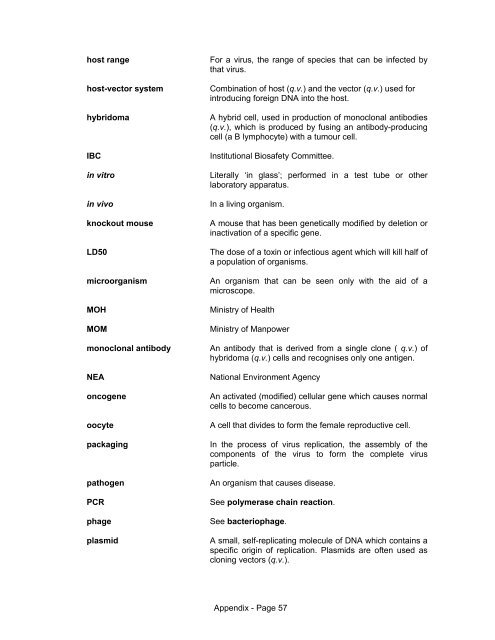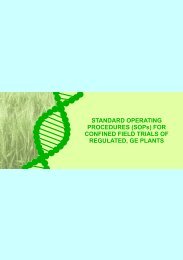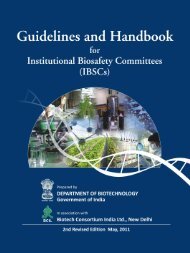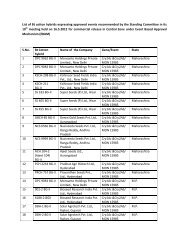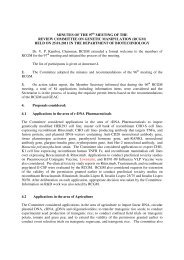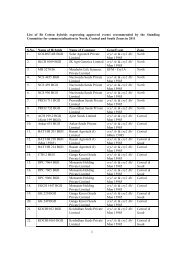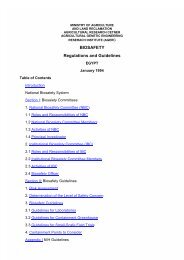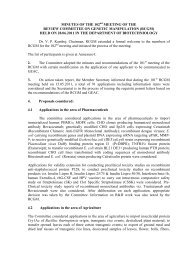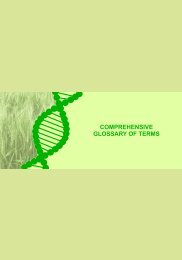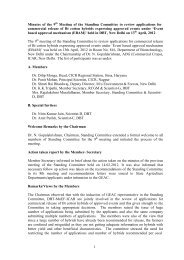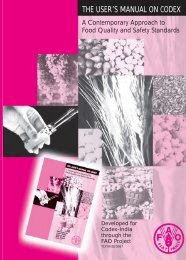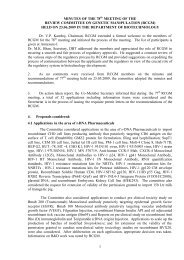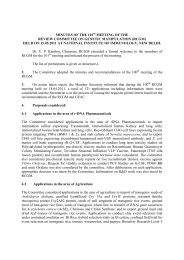Biosafety Guidelines For Research On Genetically Modified ...
Biosafety Guidelines For Research On Genetically Modified ...
Biosafety Guidelines For Research On Genetically Modified ...
You also want an ePaper? Increase the reach of your titles
YUMPU automatically turns print PDFs into web optimized ePapers that Google loves.
host range<br />
host-vector system<br />
hybridoma<br />
IBC<br />
in vitro<br />
in vivo<br />
knockout mouse<br />
LD50<br />
microorganism<br />
MOH<br />
MOM<br />
monoclonal antibody<br />
NEA<br />
oncogene<br />
oocyte<br />
packaging<br />
pathogen<br />
PCR<br />
phage<br />
plasmid<br />
<strong>For</strong> a virus, the range of species that can be infected by<br />
that virus.<br />
Combination of host (q.v.) and the vector (q.v.) used for<br />
introducing foreign DNA into the host.<br />
A hybrid cell, used in production of monoclonal antibodies<br />
(q.v.), which is produced by fusing an antibody-producing<br />
cell (a B lymphocyte) with a tumour cell.<br />
Institutional <strong>Biosafety</strong> Committee.<br />
Literally ‘in glass’; performed in a test tube or other<br />
laboratory apparatus.<br />
In a living organism.<br />
A mouse that has been genetically modified by deletion or<br />
inactivation of a specific gene.<br />
The dose of a toxin or infectious agent which will kill half of<br />
a population of organisms.<br />
An organism that can be seen only with the aid of a<br />
microscope.<br />
Ministry of Health<br />
Ministry of Manpower<br />
An antibody that is derived from a single clone ( q.v.) of<br />
hybridoma (q.v.) cells and recognises only one antigen.<br />
National Environment Agency<br />
An activated (modified) cellular gene which causes normal<br />
cells to become cancerous.<br />
A cell that divides to form the female reproductive cell.<br />
In the process of virus replication, the assembly of the<br />
components of the virus to form the complete virus<br />
particle.<br />
An organism that causes disease.<br />
See polymerase chain reaction.<br />
See bacteriophage.<br />
A small, self-replicating molecule of DNA which contains a<br />
specific origin of replication. Plasmids are often used as<br />
cloning vectors (q.v.).<br />
Appendix - Page 57


